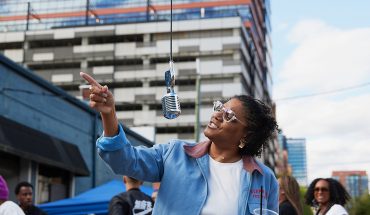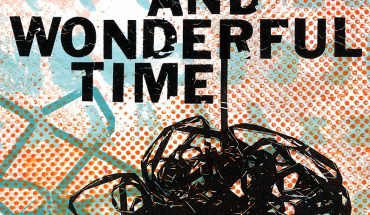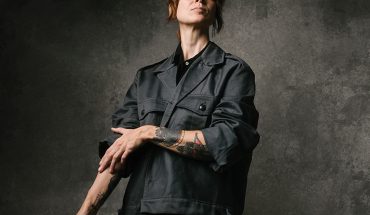Led by director Jim Waddelow, this local group of musicians and composers performs a range of music.
Written by Ayn-Monique Klahre | Photographs by Mark Rainey
They’ve got all the bells and whistles—or at least, all the strings, woodwinds, brass and percussion. The Raleigh Symphony Orchestra was founded 40 years ago by Alan Neilson, a professional musician and former principal flutist with the North Carolina Symphony. After his performing career and a new start as a conductor, Neilson was asked by a small group of supporters to form a community orchestra, an outgrowth of a performance group then based at N.C. State University. Today, the orchestra is made up of 65 musicians. “Our orchestra is comprised of a unique cross-section of society,” says Janet Shurtleff, an oboe player (and current board president) who has been in the group since it was founded. “Some are professionally trained, others are volunteers like myself who like to play—we have doctors and lawyers and schoolteachers—and the ages range from high school to people in their 80s.”
One thing that the players have in common: they’re truly part of our community. “Almost all of the soloists aren’t just North Carolina residents, they’re Raleigh people,” says music director Jim Waddelow. “And many of them are trained in North Carolina, too, with music degrees from ECU or Meredith or UNCG.” Many of the orchestra members have played together for decades. “My wife always sits with the husband of one of the ladies I partner with in the orchestra, and our children and grandchildren know each other,” says Carl Koch, a violinist who’s been with the group over 35 years. Bassoonist John Caldwell, who joined 23 years ago, agrees. “We really feel a kind of kinship with each other.”
“You sort of get drawn in, and then you’re family,” laughs Shurtleff. “I started hanging out with this group when I was 24, and now I’m 65—it has encompassed my life!” That being said, says Caldwell, “The new people are readily accepted!”
That brings up a point: Just as the orchestra is a home to longtime players, it’s a resource to bring new musicians into the community. Craig Hanemann, who’s been playing violin and piano with the group for over 20 years, emphasizes the importance of playing in local orchestras for musicians as they’re starting out. “You have to get involved, because these are the people who will get your career off the ground,” says Hanemann. “And it’s the same for the next generation of listeners—you have to start going to performances.”
As the “new” conductor of the group—this year will be his 10th—Waddelow says that the group aims to support local musicians while making symphonic music accessible to an ever-wider audience. They strive to keep ticket prices low and to offer a diverse sets and shorter performances to appeal to more than just classical music aficionados. “It’s our mission to promote the understanding and love of music in the community,” says Shurtleff.
“We’re willing to try new things,” says Caldwell, citing recent performances like an aria competition, exhibition of Polish music and show tunes performed in collaboration with Raleigh Little Theatre. “We often perform things you don’t hear other groups play,” says Shurtleff.
On the classical front, Waddelow says he works to schedule performances of pieces that haven’t recently been heard in the area as a complement to the other local musical offerings. “Some of the works we perform are by well-known composers—but for every Chopin, you’re going to hear something that hasn’t been done in the Triangle for over a decade,” says Waddelow.
Waddelow also makes it a point to both perform and commission new work, just as his predecessor, Alan Neilson, did. “It’s a nourishing place for composers,” says Lanette Lind, a keyboardist who’s been with the group more than 30 years and had many of her own scores performed. “You need to have a healthy environment for composers and musicians—if you don’t, it would be like going to a bookstore and finding nothing that’s been written after 1900!” she laughs. “Not to take away from the classics, but if you don’t keep moving forward, you could have a Beethoven or Bach alive today and writing, and no one would hear it.”
Hanemman has also welcomed the opportunity to compose new pieces and have them played, one of which will premiere this fall. “You think about big-name composers like Mozart and Beethoven, and they were able to improve their larger works by hearing groups play their music,” says Hanemman.
Playing unknown pieces can be a gamble. “Many orchestras only play music they know audiences want to hear, but I would say: You have had the opportunity to hear these older works being performed, why not step out of your comfort zone a little bit and delve into something new?” says Hanemman. “If you don’t try something new, you won’t know what you missing.” That’s as much for the audience as it is for the musicians, giving them an opportunity to play something they haven’t seen before alongside more familiar pieces. “Jim understands that education and interaction with the community are the heart of this job,” says Irene Burke, a flutist who’s been with the orchestra for 30 years. “Our performances are always hands-on and interactive.”
In this digital age, with so much listening available at the touch of a button, the group reminds us of how truly special it is to see live music. “There’s a difference between being at a performance and listening to it on the radio or TV,” says longtime oboist Mary Greiner. “The visual and emotional impact of seeing the instruments being played—how the mute in a tuba is huge, how the violins all move together—brings energy and excitement you don’t get on a CD.”
“If as a musician, I can get into the feelings and hearts of children, to make them feel empathy, through music, I’ve succeeded,” says Lind. “I joke that my crowning achievement is making children cry.”




